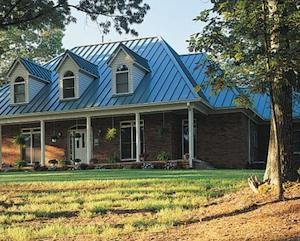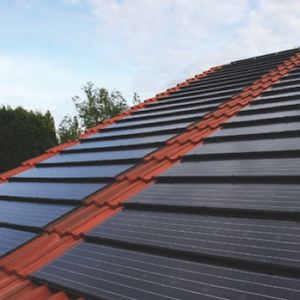Green Roof Systems

LiveRoof Roofing System
Roofs provide one of the most basic functions of any building, shelter from the elements.
The life of a roof is not an easy life; it has to endure extreme swings in temperature, constant exposure to harmful ultraviolet rays, wind, rain, hail, and snow.
It's a thankless job that doesn't get much attention unless something goes wrong.
Finding the right roofing material for your green home is crucial. It must not only meet the criteria to be considered 'green'; recycled content, durability, recyclability, energy-saving, etc., it must also be able to stand up to the extreme conditions up on the roof.
Green Roof Systems - Job # 1: Durability
The main job of any roofing material, green or not, is keeping the elements on the outside of the home.
Any failure to do so can not only do significant damage to the roof, but also to the building structure itself, and anything contained within it.
This type of damage only increases the cost (environmental and monetary) of lower quality roofing material.
Green Roof Systems
Asphalt shingles are by far the most common type of roofing material for new homes due to their relatively low cost and ease of installation. They do have some environmental drawbacks, which may not make them the best choice if you are building a green home with a lower environmental impact.
Asphalt shingles are very rarely made of recycled content, and have an average lifespan of 15 to 20 years. They are a resource-intensive product, and will typically end up in a landfill at the end of their life cycle. The National Roofing Contractors Association (now there's a fun group) has estimated that 75% of all money spent on roofing in the U.S. goes to replacing or repairing existing roofs.
Due to the durability and lack of recycling opportunities for asphalt shingles, you should only use the heaviest-duty shingles (minimum 30 year warranty) if you do decide to use them for your roof. Fortunately, there are many alternatives to traditional asphalt shingles, many of which are more earth-friendly.
Greener Alternatives to Asphalt Shingles
Roofing alternatives to asphalt shingles are made of steel, plastic, rubber, and cement that all have recycled content and are available in shake or shingle styles. Other options are clay or concrete roof tiles, but should only be used in areas where hail rarely falls. Steel roofing is another option that is gaining in popularity. Coated with a galvanized finish, steel roofing can be a low-maintenance option with a long lifespan.

PAC Clad Roof by Petersen Aluminum
Green Roof Systems Can Be Cool
One way the choice of roofing material can make a big difference is simply by being light in color. The EPA has started the "Cooling Our Communities" program, and it calls for lighter colored, low solar absorption roofing surfaces.
These types of reflective roofing works by helping a home's insulation work more efficiently by reducing solar gain into the home, lowering the need for air conditioning. In other words, a dark roof absorbs the sun's heat, making the home hotter, while a light colored roof reflects much of that energy away from the home. It's like the difference between wearing a black shirt on a hot sunny day versus wearing a bright white shirt. With apologies to Johnny Cash, lighter is cooler.
Green Roof Systems - 'Dark Green' Roofing
If you are really serious about building as green a home as possible, there are even more environmentally-friendly options.
Green Roof Systems - The Living Roof
A truly 'green' roof is a living roof, in which soil and plants are put over a roof's waterproof membrane. This layer of living material, along with being super insulating, helps reduce rain runoff that usually happens when a home with a hard roof covers open earth. A living, breathing roof is the ultimate symbol of a home's commitment to treading lightly on the earth.

Monier Redland PV Roofing Tile
Green Roof Systems - Solar Shingles
Building-Integrated Photovoltaics (BIPV) is yet another growing trend in green roofing. New advancements in solar energy technology has led to the introduction of photovoltaic roof panels and shingles. With these exciting new products, the roofing material not only does its' original job of keeping the elements out, it works double duty, creating free, clean energy to help power the house it's covering.
Solar electricity in the form of shingles and smaller panels is still quite expensive,and requires installation by a contractor specializing in solar roofing technologies, but costs continue to drop. For more info on solar shingles, click here. See an exciting new solar shingle from Dow here.
Taking the environmental impact of roofing materials into consideration is an important step when planning to build a green home. We will look at all of these roofing options in separate articles to help you make the right choice for your new home, or to replace aging, existing roofing materials.
comments powered by Disqus
























































































































































































